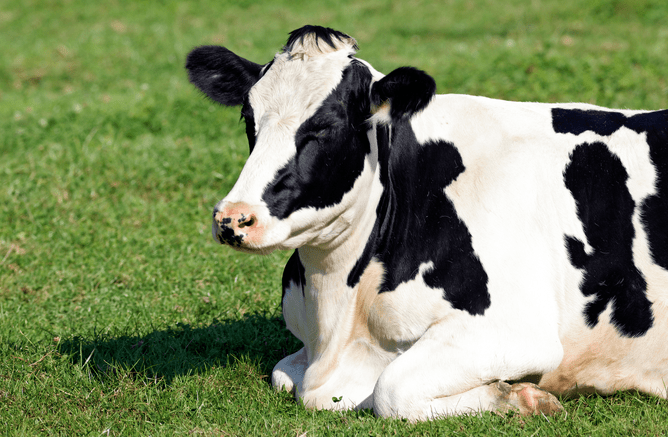As calving calms down, production ramps up and cows start cycling. The lush grass and unpredictable weather breed the perfect conditions for cows to succumb to various conditions.
If you have a cow who has rapidly become unwell, some of the things we may find include
Mastitis (especially black mastitis),
Badly infected uteruses,
Gut issues/twisted stomachs - such as left displaced abomasum (LDA), right displaced abomasum (RDA), or mesenteric twists,
Acidosis, also known as grain overload,
Infectious diseases, such as the dreaded Salmonella sp.
Young cows may also have new teeth coming up, which can cause infections or just a reduction in eating.
Black mastitis
Sometimes, there is some confusion as to what black mastitis is. It is usually caused from an E. Coli bacteria, but can occasionally be a really bad Staph aureus infection. Not every cow with an E. Coli mastitis will have black mastitis.
Mild cases just look watery and have a very high Somatic Cell Count (SCC), but can come right quickly with the right treatment. The bad cases can see cows 'go down' quite quickly. I've had cows I have examined standing, picked up as sick that day, that have died hours later!
If you are seeing watery, or bloody and watery milk, check if any part of the quarter or teat is cold, and re-check later. Cold patches occur where the skin has 'died ' and this will fall off, creating an abscess at a later stage (if the cow is treated and survives). These abscesses take a long time to heal, so cows tend to be on-farm dripping pus around for a long time, which is both unhygienic and unsightly. I would recommend culling as soon as you realise this is likely.
One of the problems with E. Coli is that the bacteria release toxins as they die. White penicillin kills bacteria so are not recommended, while Engemycin stops the bacteria growing rather than killing it, so the toxin release is minimised. Flunixin, which is a non-steroidal anti-inflammatory drug (NSAID), can help protect against the toxins, however, most people only have Ketomax or Metacam on-farm, and these will also help.
Twisted stomachs
LDA's and RDA's are more likely to occur in high-producing dairy cows, and cows fed grain. It is a lot more common overseas compared to here, but a few still tend to be diagnosed in NZ each year. When something happens, such as a mild milk fever, which stops the abomasum from moving the food through as fast, gas can accumulate, and then it may "float" up on either side of the rumen to cause an LDA or RDA.
RDA's are more likely to cause the abomasum to also twist, cutting off the blood supply and this becomes a severe disease very quickly.
LDA's are not as severe. Cows may still be eating "OK" and, while usually picked up within a few days, will be losing weight more slowly over a few weeks.
A cow with an LDA diagnosed early enough (when the cow is still standing and healthy) can have a good prognosis with surgery.
You may have heard about cows being rolled to correct a displacement. This could work, even without surgery, as the abomasum "floats" back to where it is supposed to sit while the cow is upside down. However, there is nothing to stop the displacement occurring again later. Surgical approaches attach the abomasum down to prevent reoccurrences.
There are many other illness out there, and every season there will be a different 'common’ diseases, so keep in touch with your KeyVet for your sick cows. As always, there is a better chance of recovery with earlier treatment.

